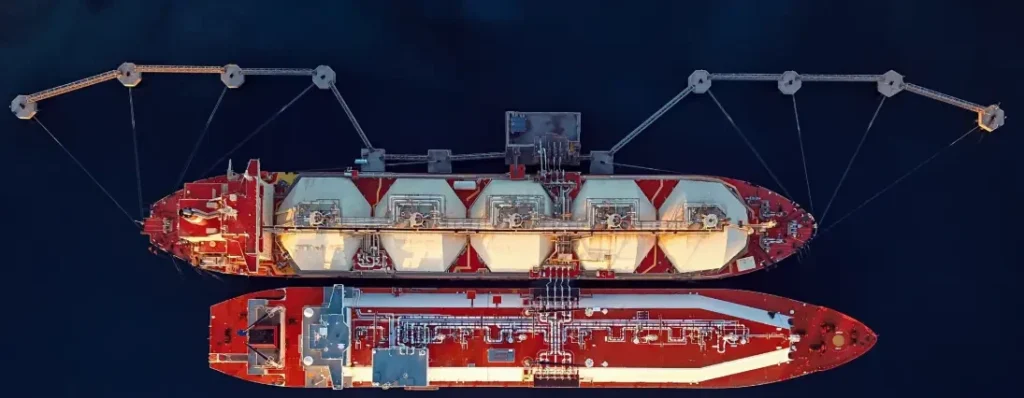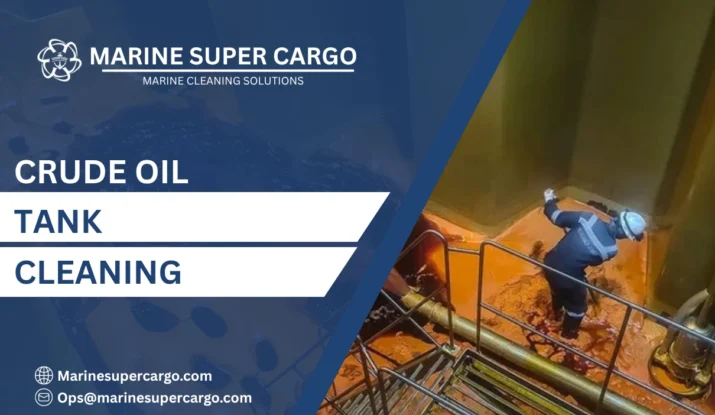Crude oil tank cleaning represents one of the most demanding operations in maritime cargo handling. Tanker vessels transporting petroleum products face complex challenges requiring specialized knowledge and equipment. Marine Super Cargo delivers expert crude oil tank cleaning services that address industry-specific difficulties while maintaining strict safety and environmental standards throughout every project.
Understanding Crude Oil Tank Cleaning Requirements
Crude oil tank cleaning demands comprehensive planning before operations commence. Assess residue characteristics, tank structural conditions, and heating system functionality throughout port and starboard sections. Marine Super Cargo technicians conduct thorough evaluations ensuring efficient cleaning strategies tailored to specific vessel requirements and cargo histories.
Major Challenges in Crude Oil Tank Cleaning Operations
Viscous Residue Accumulation
Heavy crude varieties create thick sludge layers on tank bottoms and bulkheads during transportation. These deposits solidify at ambient temperatures, complicating removal during crude oil tank cleaning operations. Heating coils must maintain elevated temperatures—typically 60-80°C—to liquefy stubborn residues effectively throughout the process.
Wax and Paraffin Deposits
Waxy crude oils leave crystalline paraffin deposits adhering to tank surfaces from forward to aft sections. Standard washing techniques prove insufficient for removing these formations. Specialized solvents and prolonged heating cycles become necessary, extending operation duration significantly during tank preparation activities. Crude oil tank cleaning
Gas Liberation and Explosive Atmospheres
Petroleum vapors released during washing create explosive atmospheres within confined cargo spaces. Continuous ventilation and atmospheric monitoring throughout crude oil tank cleaning prevent dangerous gas concentrations. Oxygen levels, lower explosive limits (LEL), and toxic hydrogen sulfide measurements require constant surveillance during all phases.
Clingage and Residue Retention
Crude oil clings to structural members, frames, and longitudinal stiffeners throughout tank spaces. This clingage retention increases disposal volumes and extends cleaning duration. Manual intervention often becomes necessary for reaching difficult areas between port and starboard frames during thorough cleansing operations. Crude oil tank cleaning
Sludge Disposal Compliance
Oily residues generated during tank washing require proper disposal according to MARPOL Annex I regulations. Port reception facilities must accept sludge meeting specific criteria. Documentation proving compliant disposal remains essential for port state control inspections and regulatory audits.

Standard Procedures for Crude Oil Tank Cleaning
Pre-Cleaning Preparations
Before commencing operations, drain all cargo lines, pump rooms, and manifold systems completely. Verify heating coils function properly throughout all tanks designated for cleaning. Strip tanks using deepwell pumps or eductors, removing maximum liquid quantities possible before washing begins.
Check atmospheric conditions using calibrated gas detection equipment. Ensure adequate ventilation systems operate from bow to stern sections. Review IMO guidelines and vessel-specific procedures outlined in the Shipboard Oil Pollution Emergency Plan (SOPEP). Crude oil tank cleaning
Crude Oil Washing (COW) Systems
Modern tankers employ crude oil washing systems using cargo itself as a cleaning medium during discharge operations. This IMO-approved method reduces clingage significantly while minimizing waste generation. COW machines positioned strategically throughout tanks during cargo discharge operations spray crude against surfaces, removing deposits efficiently.
Hot Water Tank Washing
After stripping, introduce hot seawater or freshwater through tank cleaning machines. Water heated to 70-85°C dissolves remaining petroleum residues effectively. Position machines covering all surfaces including deck heads, bulkheads, and tank bottoms throughout port and starboard areas during automated washing cycles.
Execute multiple washing cycles using different machine positions ensuring comprehensive coverage. Forward, midship, and aft sections require equal attention during thorough cleaning operations. Marine Super Cargo ensures complete surface treatment during every washing phase.
Chemical Treatment Application
Apply approved tank cleaning chemicals for stubborn deposits resistant to water washing alone. Degreasers and emulsifiers break down petroleum films adhering to metal surfaces. Allow adequate contact time—typically 2-4 hours—before final rinsing during chemical treatment phases.
Manual Cleaning and Inspection
Following mechanical washing, crews wearing appropriate personal protective equipment conduct manual inspections. Access all compartments checking for remaining deposits on structural members, heating coils, and tank corners. Remove stubborn residues using hand tools, brushes, and approved cleaning materials during detailed examination phases.
Ventilation and Gas-Free Certification
Continuous ventilation reduces hydrocarbon vapor concentrations to safe levels throughout enclosed spaces. Install portable ventilation equipment ensuring airflow circulation from multiple access points. Conduct atmospheric testing at various tank levels confirming oxygen sufficiency and absence of explosive or toxic gases.
Independent surveyors or chemists issue gas-free certificates after verifying tanks meet entry specifications. This documentation proves tanks safe for hot work, inspections, or cargo loading operations requiring clean conditions.
MARPOL and Environmental Compliance
MARPOL Annex I establishes discharge criteria for oil-contaminated water from tank washing operations. Vessels must operate Oil Discharge Monitoring Equipment (ODME) ensuring effluent meets 15 ppm standards when discharging beyond territorial waters. Slop tanks collect initial washings containing high oil concentrations for shore disposal.
Maintain accurate records in the Oil Record Book documenting all cleaning activities, transfers, and discharges. Compliance proves essential during port state inspections. Marine Super Cargo ensures complete regulatory adherence throughout all petroleum tank operations.
Best Practices for Efficient Operations
Plan sequential cargo schedules minimizing cleaning intensity between compatible grades. Heating system maintenance prevents delays during temperature-critical operations. For additional specialized techniques, reference our guide on chemical tank cleaning procedures addressing different cargo types.
Invest in crew training covering safety protocols, equipment operation, and emergency response procedures. Regular equipment maintenance ensures operational reliability throughout demanding petroleum operations.
FAQs About Crude Oil Tank Cleaning
Q1: How long does complete tank washing typically require?
Operations typically require 3-5 days depending on tank quantity, residue characteristics, and required cleanliness standards for subsequent cargo.
Q2: What temperature is optimal for washing operations?
Maintain water temperatures between 70-85°C for effective petroleum residue dissolution during washing cycles.
Q3: Can tanks be cleaned at sea?
Yes, vessels conduct washing operations at sea in compliance with MARPOL regulations regarding discharge locations and effluent standards.
Q4: What safety equipment is essential during operations?
Required equipment includes gas detectors, ventilation systems, personal protective equipment, emergency rescue gear, and atmospheric monitoring devices.
Q5: How is sludge disposal managed?
Sludge transfers to port reception facilities or specialized treatment vessels meeting MARPOL Annex I requirements with proper documentation maintained.
Partner with Marine Super Cargo for professional petroleum tank services ensuring safety, efficiency, and complete regulatory compliance.


